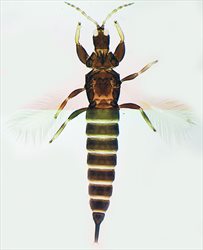
Male
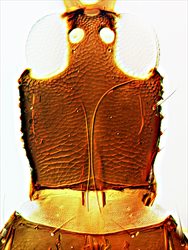
Head

Head

Antenna

Antenna

Female fore tarsus

Meso & metanota
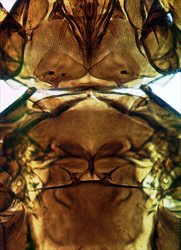
Prosternites
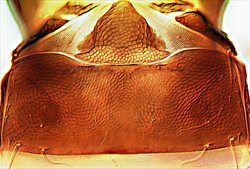
Pelta & tergite II
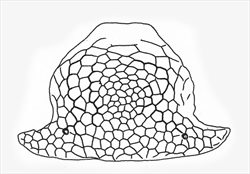
Pelta
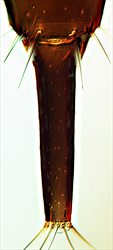
Tergite IX & tube
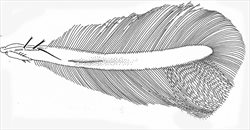
Fore wing
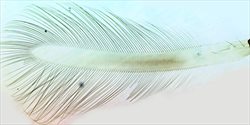
Fore wing
Both sexes fully winged. Body brown; tarsi yellowish, also mid and hind tibiae at base and apex; antennal segment III mainly yellow, IV–VI yellow in basal half but brown distally; fore wings pale with weak shading medially; major setae pale. Antennae 8-segmented; III with 3 sense cones, IV with 4 sense cones; VIII constricted to basal neck. Head reticulate, slightly broader across cheeks than across eyes; cheeks with about 4 prominent tubercles; eyes large; postocular setae bluntly capitate, arising lateral to mid-point of eye; maxillary stylets retracted to eyes, close together medially. Pronotum reticulate laterally, sculpture weak or absent medially; with five pairs of weakly capitate major setae. Prosternal basantra absent; mesopresternum formed of 3 sclerites; metathoracic sternopleural sutures long. Fore tarsus with tooth. Metanotum reticulate. Fore wings parallel sided, with more than 30 duplicated cilia; sub-basal setae S3 finely acute, S1 and S2 capitate. Pelta reticulate, triangular with sinuate lateral margins; tergites II–VII each with two pairs of slender sigmoid wing-retaining setae; tergite IX setae S1 shorter than half of tube length.
Male scarcely smaller than female; tergite IX setae S2 stout and blunt; sternite VIII without pore plate.
Over 20 species are listed under the genus Phlaeothrips. However, many of these are old names for which specimens are not known to exist, and some species might be better placed in the genus Hoplandrothrips. Most of the species in Hoplandrothrips have the fore wings slightly constricted medially, whereas the wings of Phlaeothrips species are parallel-sided. P. coriaceus differs from P. annulipes in having the head with more prominent tubercles on the cheeks, antennal segments III-IV much more yellow, the major pronotal setae less strongly capitate, and in lacking a sternal pore plate in males.
Breeding on dead branches and tree trunks of various angiosperm trees, and presumably feeding on fungal hyphae.
Widespread in England, although collected infrequently (Mound et al., 1976), but found throughout Europe from Norway and Finland southwards, and also from Iran as well as North America.
PHLAEOTHRIPIDAE - PHLAEOTHRIPINAE
Phlaeothrips coriaceus Haliday
Phloeothrips coriaceus Haliday, 1836: 442
Phloeothrips simillima Reuter, 1880: 18
Phloeothrips immanis Bagnall, 1927: 582
Mound LA, Morison GD, Pitkin BR & Palmer JM (1976) Thysanoptera. Handbooks for the Identification of British Insects 1 (11): 1–79.